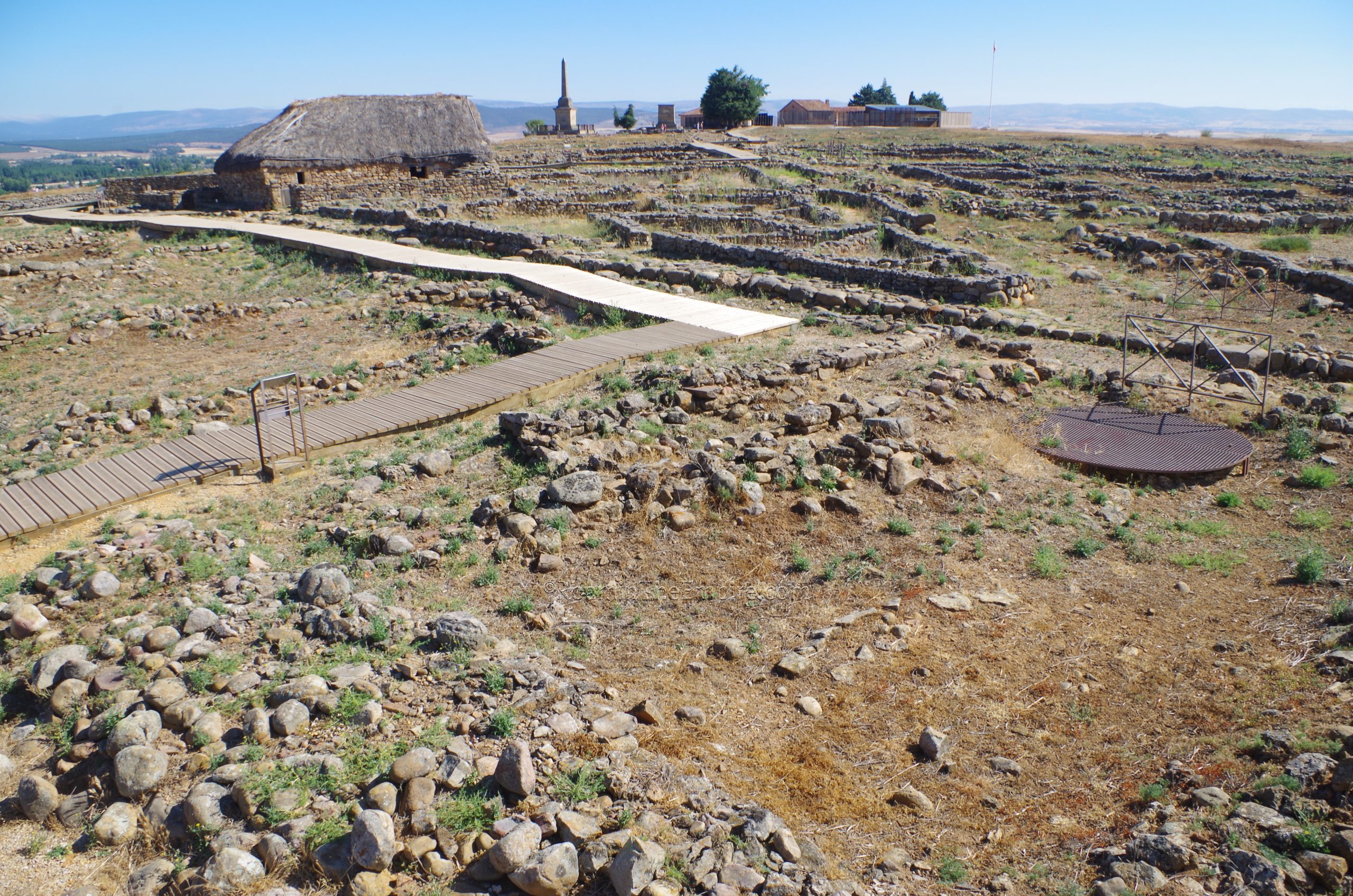
The ancient settlement of Numantia is today located on a hill, the Cerro de la Muela, just to the south of the town of Garray in northern Spain. Habitation on the hill dates back to at least the latter Neolithic periods with more or less consistent occupation through the Chalcolithic and Iron Age. The settlement here seems to have been fortified by the 4th century BCE, but possibly as early as the 9th century BCE, when Celtic migrations from Gaul into Iberia began to develop the hybridized Celtiberian culture with the previously settled Iberian peoples. Aside from the defensible hilltop location, the location of the oppidum was able to control an important crossing point of the Durius (modern Duero River). There is some divergence in the Roman sources about which Celtiberian population occupied Numantia and the surrounding area by the time of Roman contact. Strabo, who calls Numantia the most famous Celtiberian city, as well as Pomponius Mela and Ptolemy attribute the settlement as the chief city of the Arevaci. Pliny the Elder calls it a city of the Pellondones, who seem to have been a distinct population that was more or less a subject of the larger Arevaci.
Following their victory in the Second Punic War, the Romans took control of the former Carthaginian territories in eastern and southern Iberia, incorporated into the provinces of Hispania Citerior and Hispania Ulterior, respectively. Some of the Celtiberian groups that had allied with the Romans to eject the Carthaginians were understandably displeased to trade the hegemony of the Carthaginians for that of the Romans, began rebelling almost immediately. This lead to the First Celtiberian War that stretched through the 1st half of the 2nd century BCE and included Roman incursions into the area and the occasional involvement of the Arevaci. Cato the Elder may have campaigned at or near Numantia during his time leading an army in Spain around 195 BCE, but there are no details on those possibilities. The Arevaci were defeated by Tiberius Sempronius Gracchus in 180 BCE in the mountains east of Numantia and remained at peace with the Romans until 154 BCE.
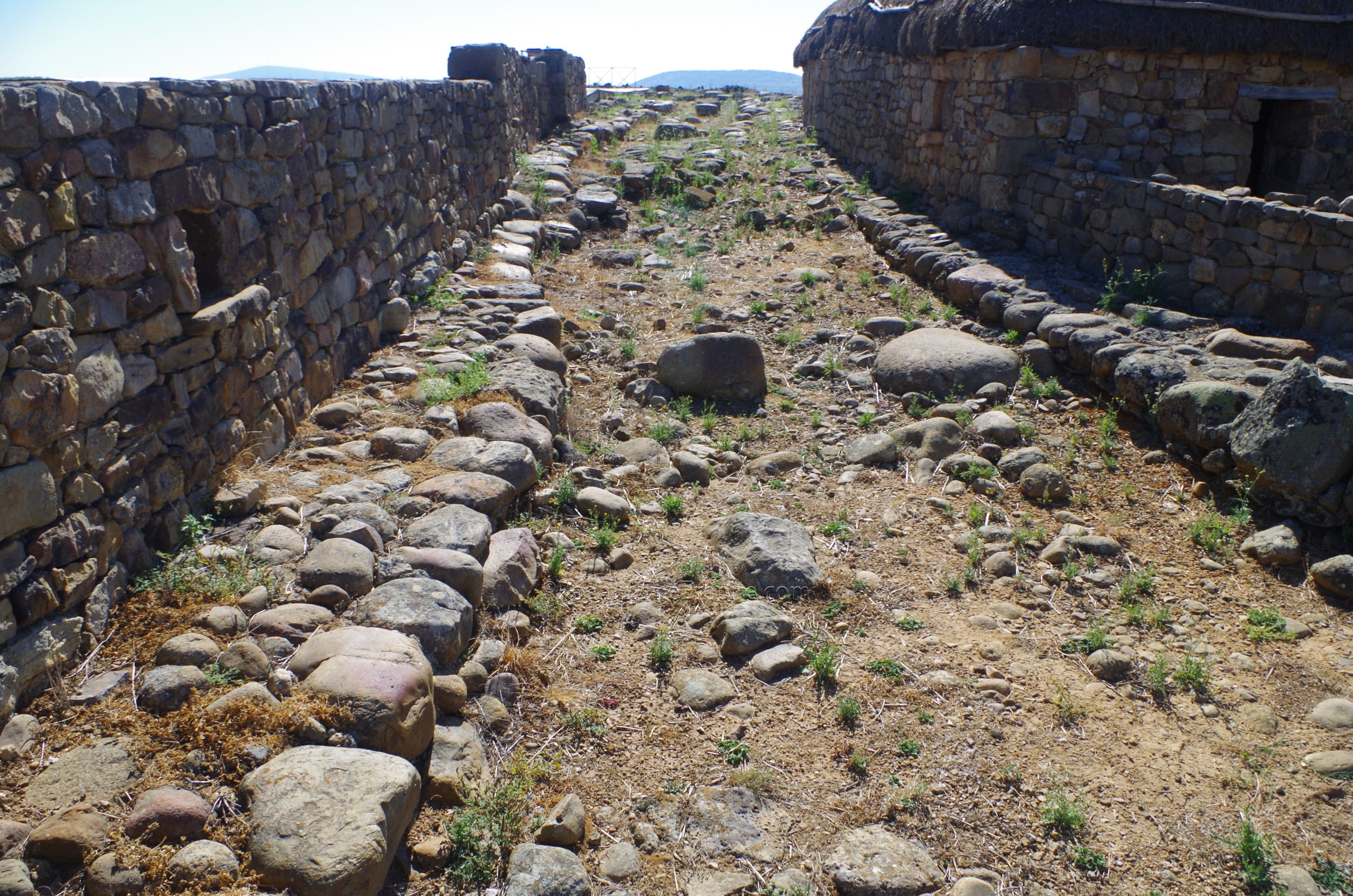
A disagreement in the terms of the treaties that ended the First Celtiberian War led to a Roman army being sent against the nearby town of Segeda, whose inhabitants fled and sought refuge at Numantia. The Roman general Quintus Fabius Nobilitor encamped nearby and laid siege to Numantia with a force that included 10 war elephants given to the Romans by the Numidian king Massanissa. Nobilitor attempted an assault of the city, but one of the elephants was hit and spooked, causing the rest of the elephants to rampage and break the Roman lines, allowing the Arevaci to sally and inflict significant losses on the Romans, driving them away. Numantia was besieged again in 151 BCE, leading the Arevaci to ask for peace. These episodes kicked off a conflict that is sometimes specifically referred to as the Numantine War, because of the central role Numantia played in the conflict.
Following a few years of relative peace, hostilities once again resumed in 143 BCE. Quintus Caecilius Metellus Macedonicus, hero of the Fourth Macedonian War (and mentioned in the previous series of posts on Dion) attempted an unsuccessful siege of Numantia, but did succeed in subduing a number of surrounding settlements in an effort to cut off supply lines to Numantia. Two years later in 141 BCE, Quintus Pompeius Aulus again laid siege to Numantia. Despite an attempt to divert a river (which river is not specified, but possibly the Durius) in an effort to starve the city out, it was Aulus’ own troops that suffered from starvation and disease over the winter, forcing him to conclude a treaty with Numantia in 140 BCE after being on the losing end of a series of engagements with the Numantines. Unfortunately, Aulus did not have the authority to conclude a treaty, and he later denied having done so, but absconded with the payments given by the Numantines. He was brought up on charges of misconduct in Rome, of which he was eventually cleared, and the treaty was ignored.
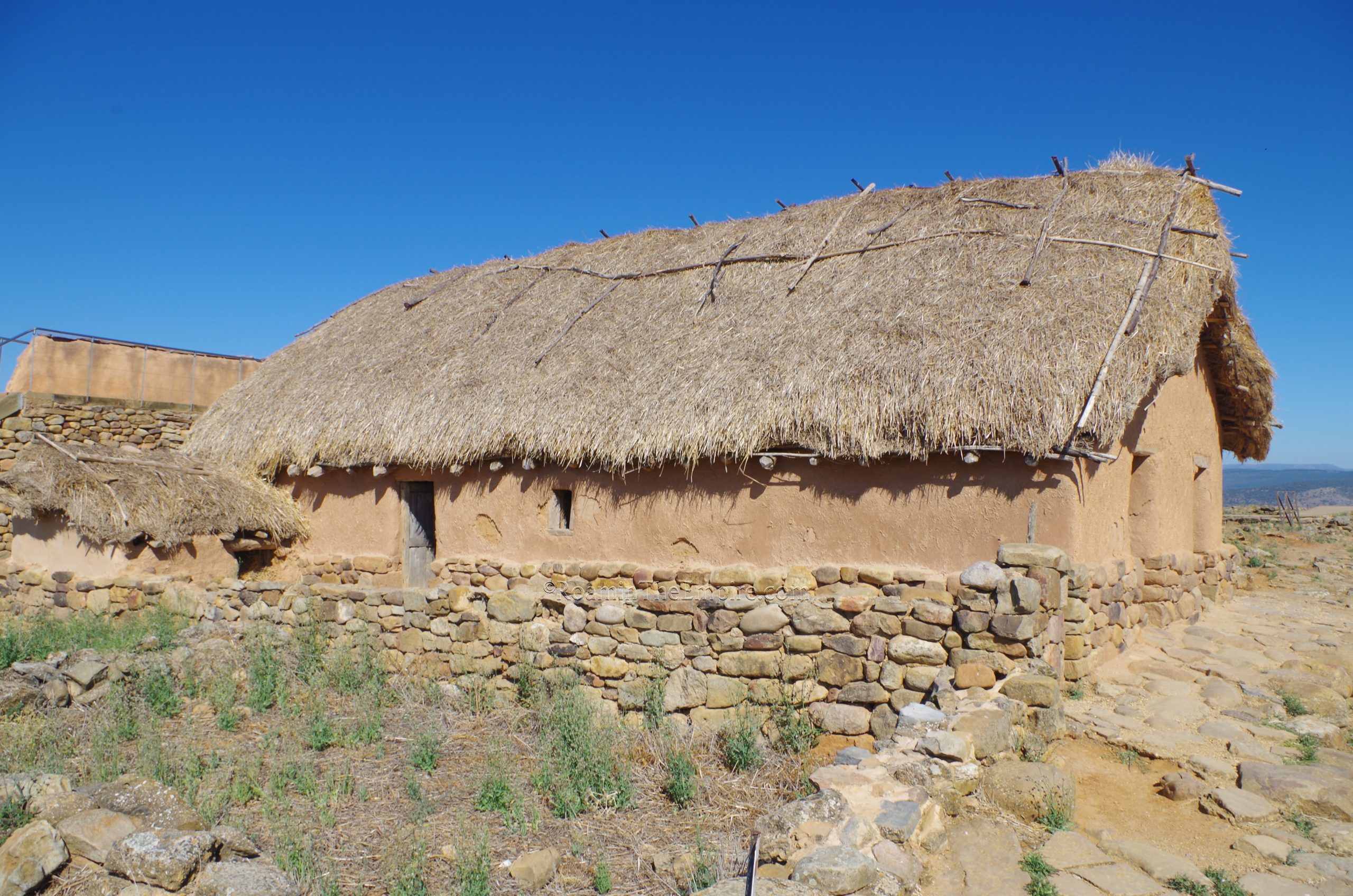
The Romans suffered a number of defeats at the hands of the Numantines over the course of 138 to 135 BCE. A particularly unfortunate episode (for the Romans) occurred in 137 BCE when Gaius Hostillius Mancinus suffered a series of defeats culminating in a battle (after attempting to flee in the night) in which his entire army was cut off. One of his young officers, Tiberius Gracchus, son of the earlier Tiberius Sempronius Gracchus and later to gain fame with his brother as an agrarian reformer, negotiated a treaty that allowed some 20,000 captured Romans to be set free. The Senate once again did not recognize the treaty and instead sent Macinus back to the Numantines naked and bound, though the Numantines did not accept the gesture. Hostilities continued. In 134 BCE, Publius Cornelius Scipio Aemilianus, grandson (by adoption) of Scipio Africanus, fresh off his own victory in the Third Punic War, was appointed consul and given command of the Numantine affairs.
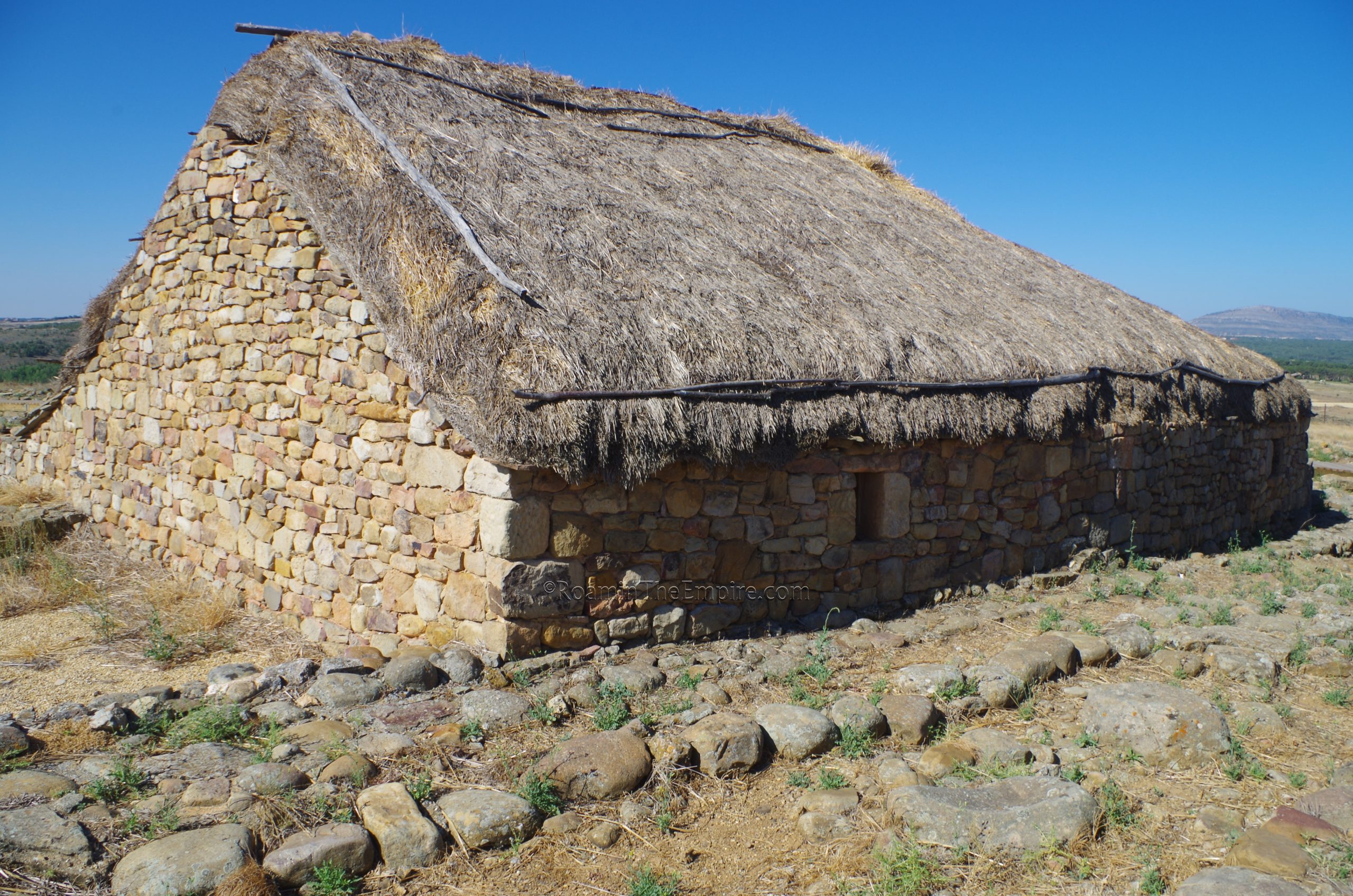
Scipio reorganized the affairs of the Romans and recruited new troops and requisitioned supplies from among their allies in northern Hispania. He laid siege to Numantia once again that year, building an intricate series of 9 kilometers of fortifications and defenses that encircled the city. His force of about 60,000 troops included elephants, Numidian cavalry supplied by Jugurtha, and about 300 siege weapons. Numantia was defended by about 4,000 troops, with another 6,000 civilians. After nine months of siege, stretching into 133 BCE, the town was starving, and many of the defenders committed suicide rather than surrender to the Romans, leaving only a few hundred of the roughly 10,000 to actually surrender to Scipio. Those were sold into slavery and the city was razed. Numantia was so poor, that the per soldier take of the spoils was reputedly only 7 denarii each. Scipio was given a triumph in 132 BCE for his victory over Numantia.
The site remained mostly abandoned for around a century, aside from the brief occupation of an army during the Sertorian War. During the reign of Augustus, though, it was re-settled and reconstructed.. This seems to have served as a point of protection for the road between Asturica Augusta (modern Astorga) and Caesar Augusta (modern Zaragoza). The town never really reached a particular time of prominence and seems to have remained a relatively minor settlement. It did hit a point of decline in the 3rd century CE, though it remained occupied through at least the 6th century CE, at which time it was a Visigothic settlement.
Getting There: Numantia today is located outside the modern town of Garray, near the larger town of Soria. Getting to Numatia via public transportation options can be a bit time consuming and inconvenient. The nearest major city with easy rail connections is Zaragoza, and from Zaragoza, there are a few bus connections daily averaging between 2 and 3 hours. Price ranges between 10 and 20 Euros. Trains from Madrid run a couple times a day, taking about 3 hours and costing 22.90 Euros. The museum is in Soria, but the archaeological site is still a trip from here. There seems to be a local bus that runs a few times a day between Soria and Garray, but there does not appear to be transport from Garray to the archaeological site southeast of town. A personal vehicle seems to be the best choice for this venture.
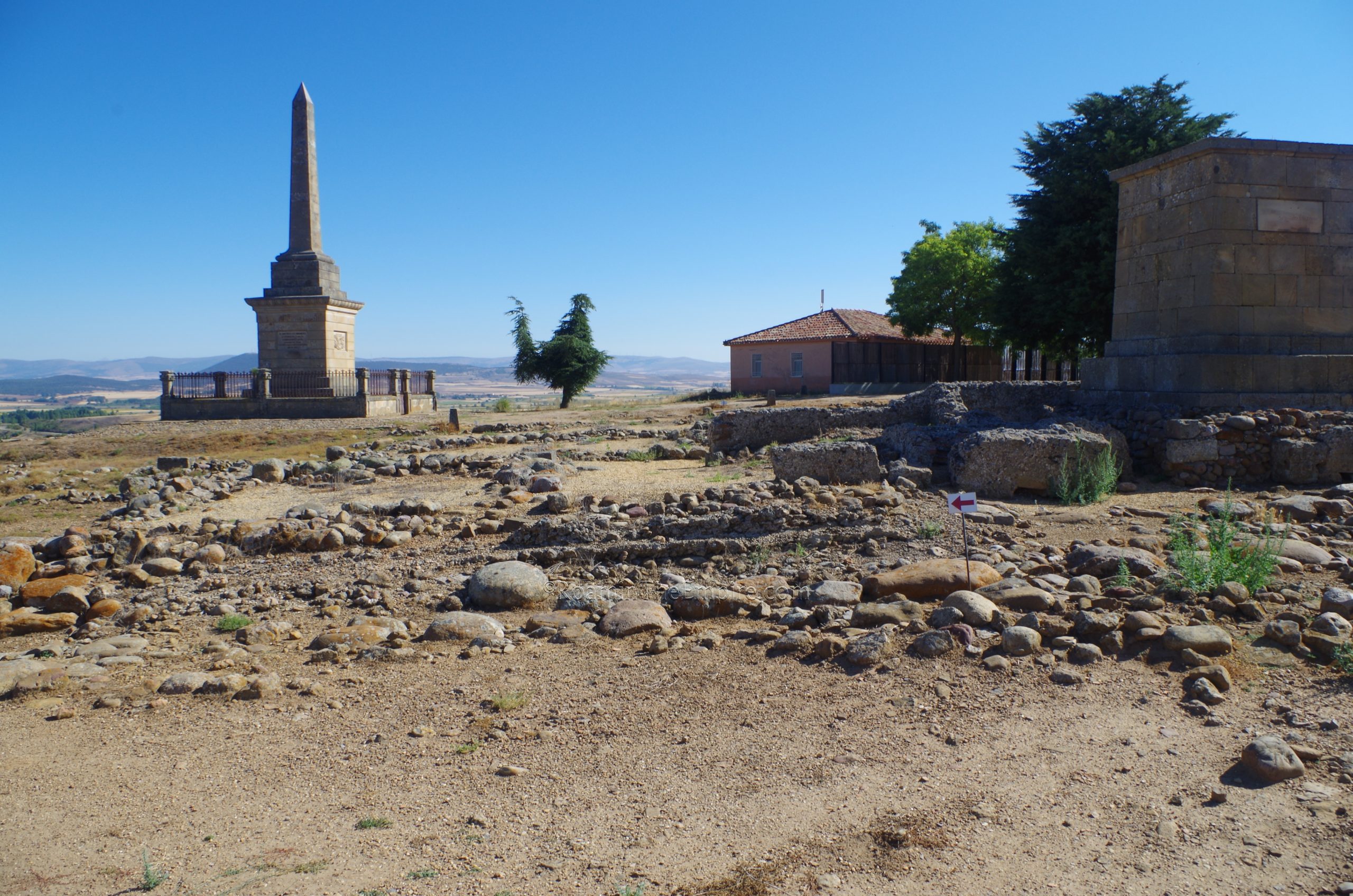
The Yacimiento Arqueológico de Numancia is located at the end of the Carrera a Numancia leading out of Garray. The site is pretty well signed from both Soria and Garray. The archaeological site is open in January/February and November/December Tuesday through Saturday from 10:00 to 14:00 and 16:00 to 18:00. In March, April, May, and October, the evening hours are extended to 19:00. It is closed on Sunday and Monday. During the summer (June to September) it is open Tuesday through Saturday from 10:00 to 14:00 and 16:00 to 19:00, and on Sunday from 10:00 to 14:00. It is closed Monday in the summer. Admission is 6 Euros.
Despite a significant portion of the hilltop settlement being excavated, a fairly limited amount is accessible. This seems to be a more recent development as the walkways of the visitor route look relatively new, and other areas appear to have been accessible in the past. Immediately inside the park are a couple of modern monuments built to the defenders of Numatia and equated with modern Spanish historical episodes. Situated around the smaller of these two are the remains of a small public bathing complex. Built during the Roman period, these baths seem to have only consisted of two caldaria, from what I can make out of the interpretation. There isn’t a whole lot to see, the monument construction seems to have disturbed the archaeological remains, and things are very fragmentary aside from a recessed area at the northeast corner of the complex.
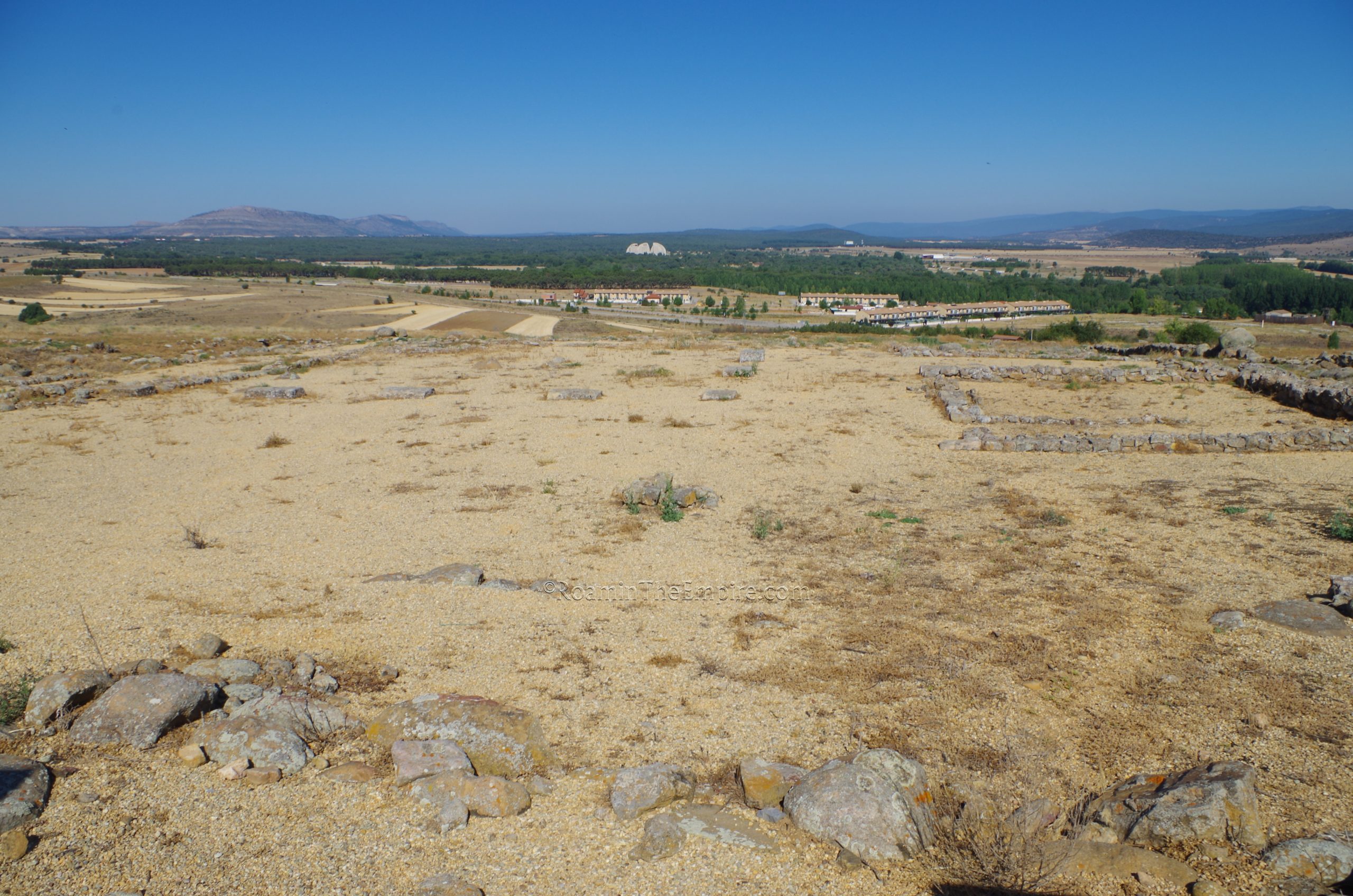
Adjacent to the baths, to the southwest, are the remains of what seems to be a large public building, interpreted as having some kind of administrative function, but not much beyond that. It’s not directly accessible and only visible at a distance, so honestly there isn’t much to see here either. It had a colonnaded central courtyard and some drainage channels have been identified. The remains of a road run between this building and the baths.
The visitor’s path continues on past the remains of some presumably residential buildings, some remains of the roads that ran through this part of the settlement are also visible. About 100 meters on is a small cistern with a staircase leading down into it. A little past that, is the first of two reconstructed houses, which seem to be the real focus here. This one is reconstructed as a house of the Roman imperial period. The interior is accessible and it is decorated with replica objects that might have been found. Perhaps one of the most interesting things in this area is that one of the adjacent roads has some pretty clear examples of the the raised stone cross-walks that are fairly common at Pompeii, but which don’t seem to be present at many other sites.
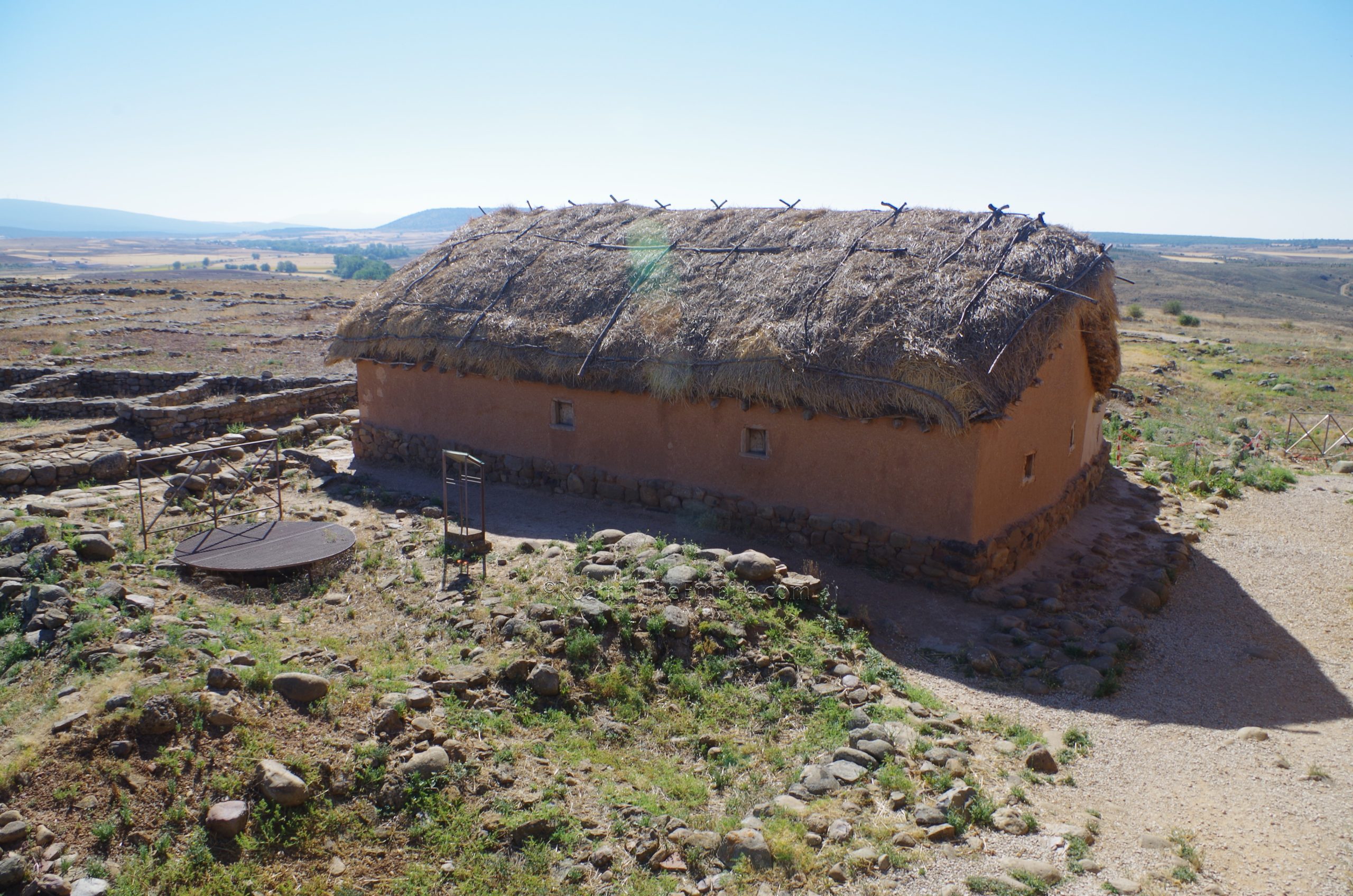
A little farther on are two more reconstructions adjacent to each other; the Celtiberian style house and a section of Celtiberian wall reconstructed in the style of that which the Romans would have encountered during their siege of the city. One can actually climb up to the top of the 3.5 meter tall wall, and this offers perhaps the best views of the entire site, and of course this area in particular. Like the Roman house the interior of the Iberian house is accessible and there are a range of replica objects and reconstructed rooms to reflect an interpretation of a typical Celtiberian house of the pre-Roman period.
The visitor’s path continues around the exterior of the city, with little being accessible and not a whole lot visible. There are the remnants of a large road running along the southern extent of Numantia before encountering the final point of the visitor itinerary, the House of the Columns. What is mainly visible here are the remains of a portico and courtyard associated with a residence, and as the name indicates, with some of the columns present. The rest of the house is actually located at a slightly higher elevation, though not much of that is visible. This house dates to the Roman period. From there, a path leads through some more of the residential area and back to the entrance of the site.
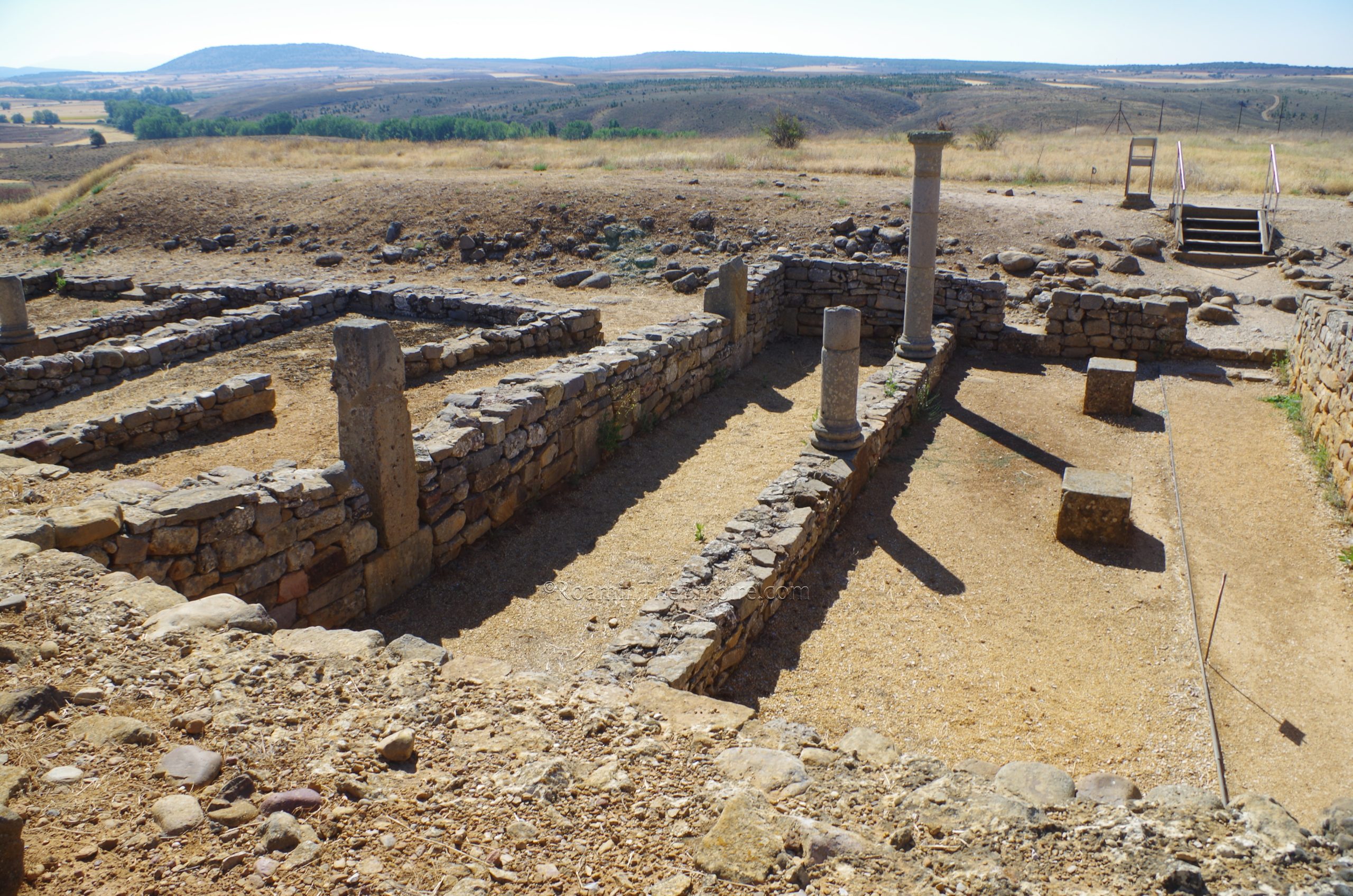
I was honestly a little disappointed with Numantia. It was meant to be kind of the focal point of the second half of the Northern Spain leg of my trip, but didn’t really live up to that. It seems more like the site relies more on the mystique of Numantia rather than presenting a really compelling experience for the visitor; particularly at this price point. Six Euros really is kind of on the high side for an archaeological site in this part of Spain. If it were free, or a couple Euros, I could kind of understand the state of the visitor experience, but as it stands, it was a bit disappointing. In total, I spent about half an hour there, and I milked that half an hour for absolutely as long as I could. There’s a little bit of information at most of the points I mentioned, but it’s also all in Spanish, so, unless you have an understanding of Spanish, there’s even less contextual information.
Continued In Numantia Part II
Sources:
Appian. The Spanish Wars, 76-98, 101.
Dobson, Michael. The Army of the Roman Republic: The Second Century BC, Polybius and the Camps at Numantia, Spain. Oxford: Oxbow Books, 2008.
Grant, Michael. A Guide to the Ancient World: A Dictionary of Classical Place Names. New York: Barnes & Noble Books, 1997.
Pliny the Elder. Historia Naturalis, 3.4, 33.50.
Smith, William. Dictionary of Greek and Roman Geography. Walton & Murray, 1870.
Stillwell, Richard, William L. MacDonald, and Marian Holland. McAllister. The Princeton Encyclopedia of Classical Sites. Princeton, NJ: Princeton U Press, 1976.


